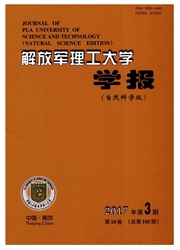

 中文摘要:
中文摘要:
为了评估青草沙水库在地震作用下的性状,利用FLIP程序分析堤基及上部堤防地震液化变形规律,比较了堤防不同位置处的残余变形、超静孔隙水压力比分布、有效应力路径等。结果表明:抗震设防烈度7度条件下,堤防结构的存在放大了地表的加速度;堤防残余变形主要发生在堤身和堤脚周围一定深度范围,地下12m及以下土体残余变形很小;堤顶中心在地震作用下,有效高度下降较多,若此时库内处于高水位或洪水位或遭遇持续暴雨,可能发生溃堤。工程建设中,需对这些薄弱环节进行加固。
 英文摘要:
英文摘要:
To understand the performance of Qingcaosha reservoir under earthquake loading, the seismic liquefaction of levee embankment was studied by the finite element analysis program for liquefaction process (FLIP) code. Residual deformation of different nodes, excess pore water pressure ratio and path of effective stress of different elements were compared. The computational results prove that the acceleration on the ground can be amplified by the levee; that the residual deformation of the soils under 12 meters becomes so little that it can be neglected; that the effective height is largely decreased and that it is verydangerous especially when it is in high or full storage capacity. All these weak points should be reinforced in project constructon.
 同期刊论文项目
同期刊论文项目
 同项目期刊论文
同项目期刊论文
 New double yield surface model for coarse granular materials incorporating nonlinear unified failure
New double yield surface model for coarse granular materials incorporating nonlinear unified failure 期刊信息
期刊信息
